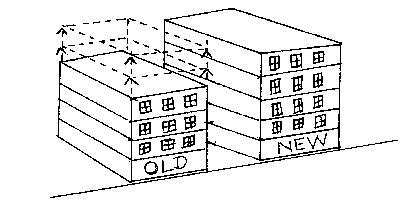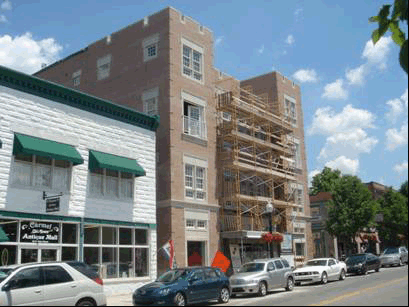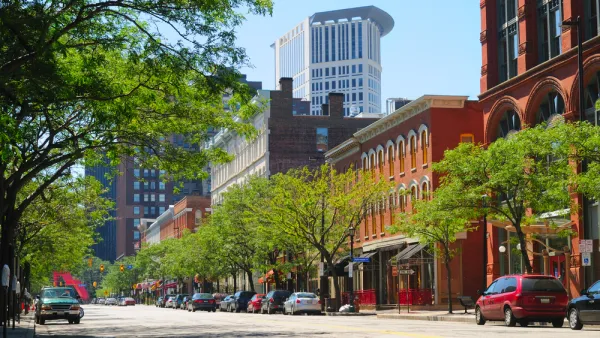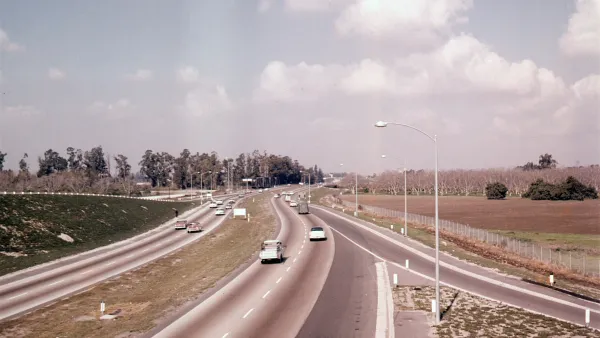Don Elliott, author of A Better Way to Zone, argues that dynamic zoning regulations can help cities grow appropriately and avoid bottlenecks to good development.
 Ever since the first zoning ordinances were adopted over 90 years ago we have thought of zoning rules as "fixed" – at least until City Council acted to change them. Minimum lot sizes, building heights, and setbacks were written down for each district, and they didn't change without Council action. A 35 foot height limit was a 35 foot height limit until Council amended the ordinance to make it 45 feet. Obviously, this made zoning predictable, but it also made the rules rigid, and most zoning codes are filled with "fixed" rules adopted by some long-dead City Council that no longer make sense. In fact, much of the history of zoning can be seen as a dance (or a battle) between the desire for flexibility and predictability. Fixed rules are predictable at the expense of flexibility.
Ever since the first zoning ordinances were adopted over 90 years ago we have thought of zoning rules as "fixed" – at least until City Council acted to change them. Minimum lot sizes, building heights, and setbacks were written down for each district, and they didn't change without Council action. A 35 foot height limit was a 35 foot height limit until Council amended the ordinance to make it 45 feet. Obviously, this made zoning predictable, but it also made the rules rigid, and most zoning codes are filled with "fixed" rules adopted by some long-dead City Council that no longer make sense. In fact, much of the history of zoning can be seen as a dance (or a battle) between the desire for flexibility and predictability. Fixed rules are predictable at the expense of flexibility.
But local zoning rules don't have to be fixed – we can design them to change with the times in those neighborhoods where change is wanted. In fact, we are used to adopting standards that change. Many cities adopt impact fees with escalator clauses – they don't require City Council to adopt a new fee each year, they just state that the fee will go up by the construction cost index. We don't know what the fee will be next year, but we know it will be determined in an objective way.

Similarly, an increasing number of zoning ordinances include "contextual" height limits – the maximum height on your property is equal to the tallest building on an adjacent site, or on your block face, or within a certain radius of your property, or one story taller than that height. Contextual height limits reflect the Council's desire that buildings "fit in" with their neighbors, or that the neighborhood gradually allow taller buildings, rather than setting a fixed maximum height. After all, many cities have a single zone district with blocks of predominantly one-story houses and other blocks of predominantly two-story houses. Rather than create two districts with two different maximum heights, Council defines the maximum height based on the surrounding context. But note that these contextual maximum building heights may change over time without further Council action. If someone builds a new building one story taller than its neighbors, that changes the context for nearby properties, and they may be allowed to build even taller buildings. That is a "dynamic" zoning standard, and I believe we will see more of them in the future.
Obviously, dynamic zoning standards are not appropriate everywhere. Most single-family residential zones are drafted for very high levels of predictability and homeowners often prefer an absolute height limit to one that may change in the future. But in redevelopment areas, mixed use areas, transit-oriented locations, and others, dynamic zoning standards have two significant advantages that some cities will find attractive.

First, they acknowledge the facts that cities change and that in some areas of the city the flexibility to respond to market forces (within limits) is more important than maintaining a pre-determined form, scale, or character. Dynamic zoning standards can allow more flexible development while still ensuring that the resulting projects are not significantly out of scale or character with those around them. While some cities may address these types of transitional redevelopment areas through form-based zoning (which is also based on a fixed graphic depiction of a preferred building form), others will decide that there are areas where flexibility is more important than form.
Second, dynamic development standards can help avoid some of the NIMBY battles that plague efforts to redevelop and densify transitional areas. While zoning theory says that Council will amend zoning when needed to reflect changing market conditions or planning goals, in fact that is only partially true. Good planning around many a light rail line or multi-family residential area have been stymied by those who oppose any change in the neighborhood no matter what its positive impacts on traffic congestion, air quality, housing affordability, or economic growth. Dynamic development standards allow Council to establish triggers that will permit gradual diversification of land uses or increases in development densities and scale over time without requiring a separate hearing (and NIMBY battle) on each project.
For both of these reasons I believe American cities will move towards more dynamic zoning standards in some redevelopment and transitional areas. Like many other things in life, sometimes the best way to get a better zoning result is to lighten up.
Donald L. Elliott is a Senior Consultant with Clarion Associates in Denver, Colorado and the author of A Better Way to Zone (Island Press 2008). He has assisted over 40 communities throughout the U.S., Canada, Russia, Indonesia, and India to reform and modernize land use regulations.

Analysis: Cybertruck Fatality Rate Far Exceeds That of Ford Pinto
The Tesla Cybertruck was recalled seven times last year.

National Parks Layoffs Will Cause Communities to Lose Billions
Thousands of essential park workers were laid off this week, just before the busy spring break season.

Retro-silient?: America’s First “Eco-burb,” The Woodlands Turns 50
A master-planned community north of Houston offers lessons on green infrastructure and resilient design, but falls short of its founder’s lofty affordability and walkability goals.

Test News Post 1
This is a summary

Analysis: Cybertruck Fatality Rate Far Exceeds That of Ford Pinto
The Tesla Cybertruck was recalled seven times last year.

Test News Headline 46
Test for the image on the front page.
Urban Design for Planners 1: Software Tools
This six-course series explores essential urban design concepts using open source software and equips planners with the tools they need to participate fully in the urban design process.
Planning for Universal Design
Learn the tools for implementing Universal Design in planning regulations.
EMC Planning Group, Inc.
Planetizen
Planetizen
Mpact (formerly Rail~Volution)
Great Falls Development Authority, Inc.
HUDs Office of Policy Development and Research
NYU Wagner Graduate School of Public Service




























